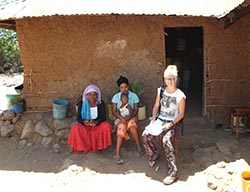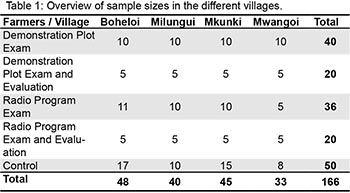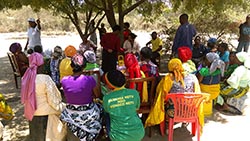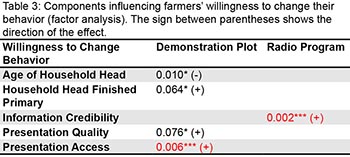Most smallholder farmers in Tanzania depend on beans for daily subsistence. However, yields remain significantly below their potential, which is partly due to the lack of information about improved farming practices and the appropriate use of agricultural inputs. Therefore, N2Africa and its partners, notably the Centre for Agriculture and Bioscience International (CABI) and Farm Radio International (FRI) launched the Maharage Bingwa Campaign (MBC). This campaign aims to “raise awareness of the benefits of improved common bean varieties combined with fertilizer (where appropriate) and good agricultural practices to support livelihood, food security and soil health benefits in smallholder farming families in Tanzania (especially Northern Tanzania)”. The MBC utilizes several information channels such as radio shows, while N2Africa facilitated demonstration plots.
The key questions any project is guided by are, does it generate impact and at what cost does it do so? Therefore, my MSc. thesis research with Wageningen University & Research (WUR) under the N2Africa project aimed to evaluate the cost-effectiveness of the information dissemination approaches (IDAs) employed by N2Africa and its partners.
The research included the analysis of the different effects of the radio campaign and demonstration plot on the knowledge level of farmers regarding the improved cultivation of beans and their willingness to adopt the practices promoted by the IDAs. To determine their cost effectiveness, the increase in knowledge level was mirrored against the cost per farmer reached for each IDA.
| The field work took place in Nov-Dec 2015, first covering interviews and meetings with N2Africa and its partners to gain a more detailed understanding of the IDAs and associated costs. Secondly, 166 farmers were interviewed in four villages in Lushoto to assess their level of knowledge with regard to the cultivation of beans. Forty of these farmers also answered a second questionnaire on the evaluation of the two IDAs (Table 1). |

|
 |
|
Table 2 shows the results of the cost-effectiveness analysis, showing that the average exam score of the demonstration plot group was significantly higher than the score of the radio program group and the control group at a 5% confidence level. Therefore, the increase in knowledge level was greater for the demonstration plot group. Cost-benefit ratios for both IDAs were calculated with use of the following formula;

|
It was found that the cost-benefit ratio for the radio program was lower compared to the demonstration plot, which means that the effect of the radio program on the knowledge level of farmers was greater per USD spent. Although the radio program had the potential to reach more farmers in a cost-effective way, the demonstration plot had a greater effect on the knowledge level of farmers and their intention to adopt the promoted practices. |

|
| The factor analysis on the components influencing the farmers’ willingness to change their behavior revealed that the access to the demonstration plot and the credibility of the information presented during the radio show have a highly significant positive effect on the willingness of farmers to adopt the improved practices promoted by the IDAs, as shown in Table 3. |  |
Based on this research, it is recommended to improve accessibility of demonstration plots and to take care that the information sources and the presenters of the radio program are trustworthy and credible. Most importantly, a mix of different IDAs is advisable, such as demonstration plots, radio programs, comics and SMS. When doing so the following factors must be kept in mind; (a) the information of both/all IDAs need to be coherent, (b) the information needs to be presented in a way that farmers can understand (including local terms and no scientific words), and (c) the IDAs should include explanations about the target agro-ecological zone and region.
Lastly, it is crucial to conduct further research on the actual adoption of modern agricultural practices by the farmers to verify the results of this research. Also, the research could be scaled up to evaluate the cost-effectiveness of the radio program and the demonstration plot in other regions within Tanzania and the other IDAs employed by N2Africa and its partners.
My thesis report can be found on www.N2Africa.org
Verena Mitschke, Wageningen University & Research

